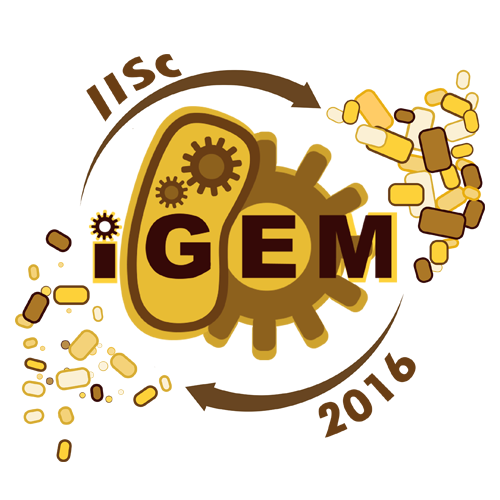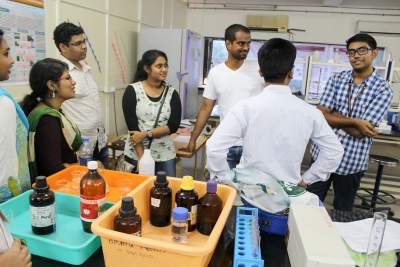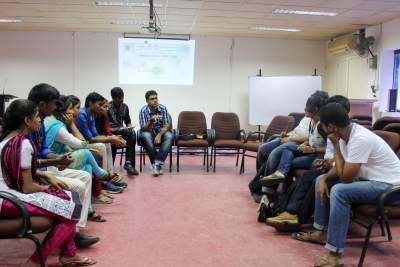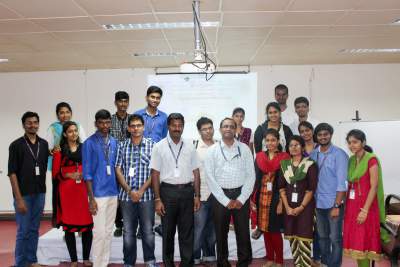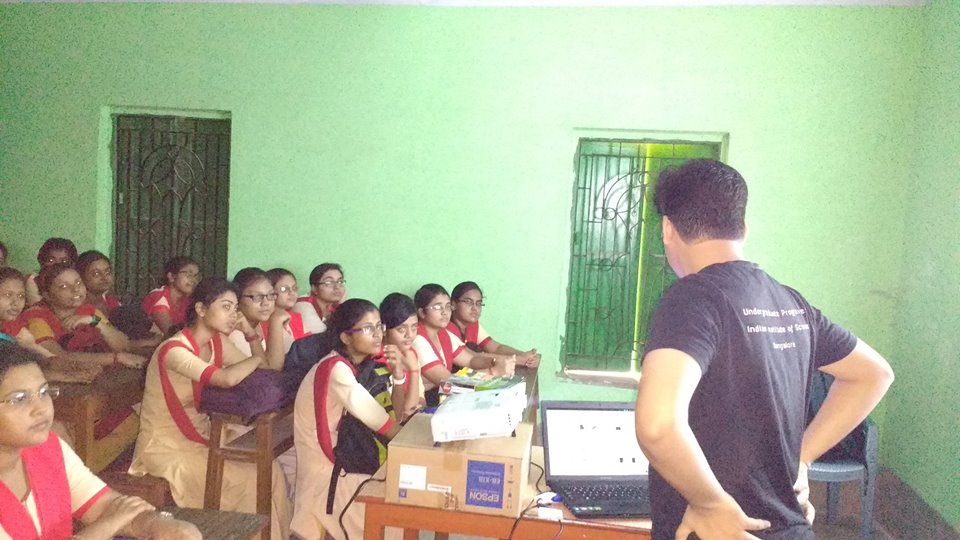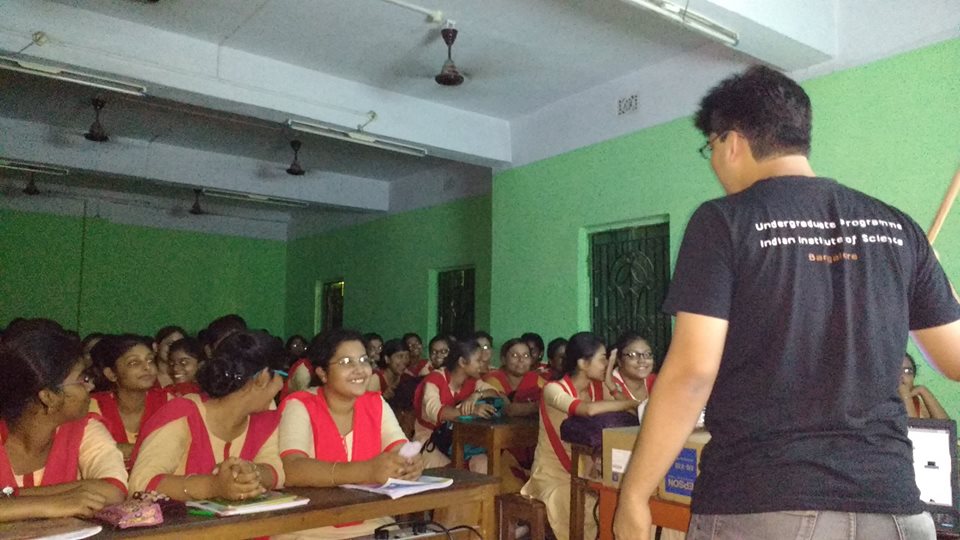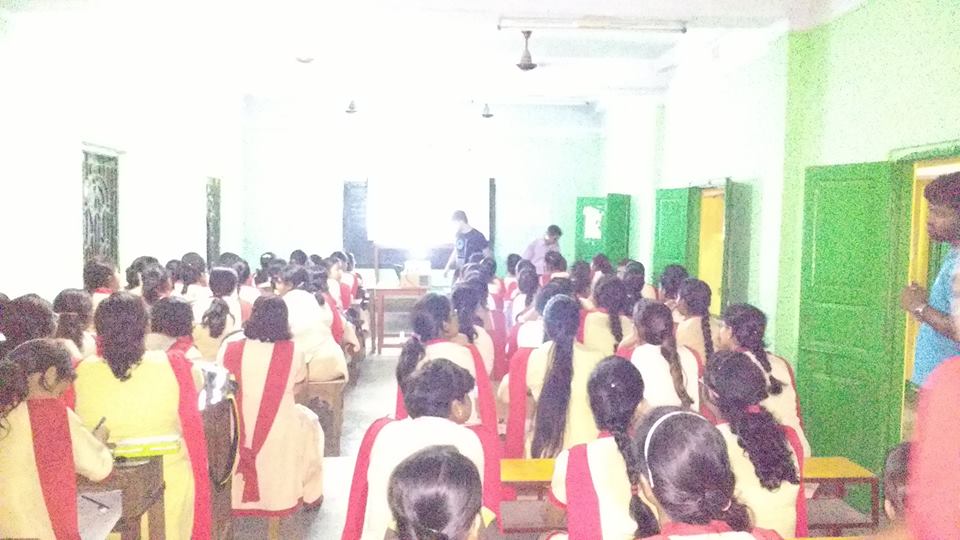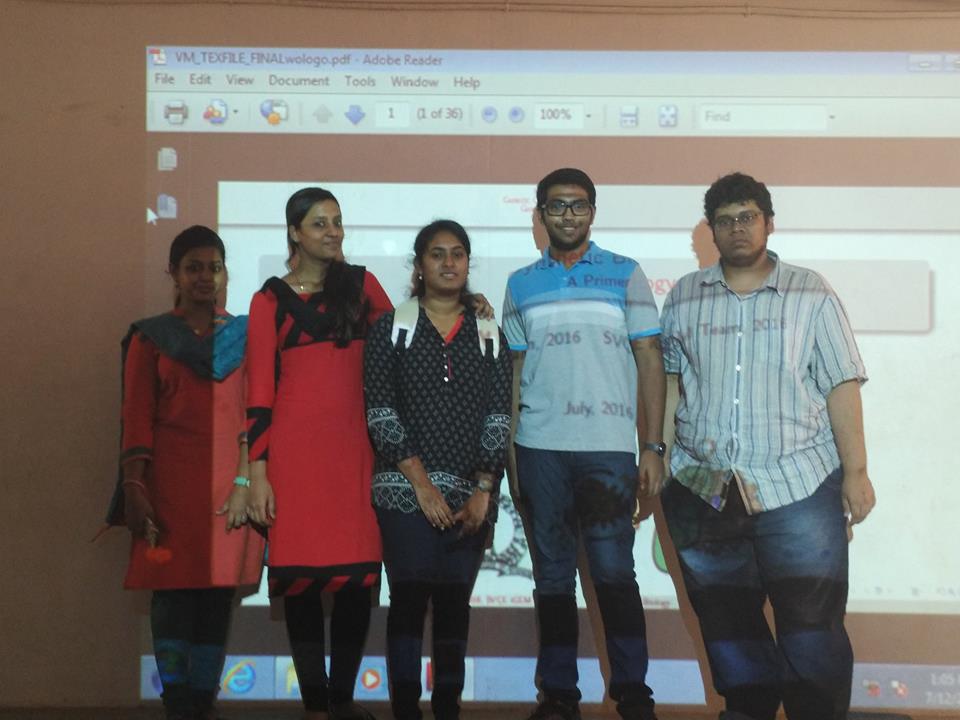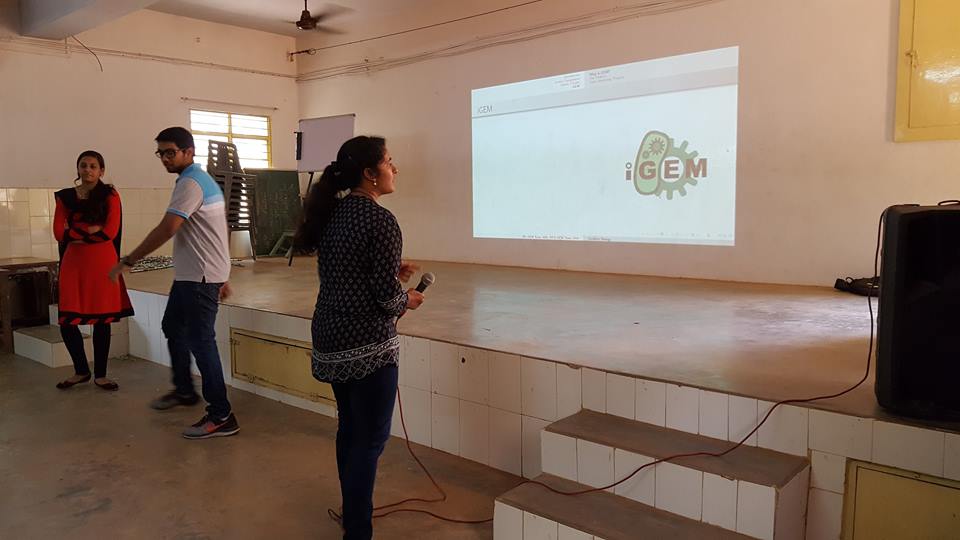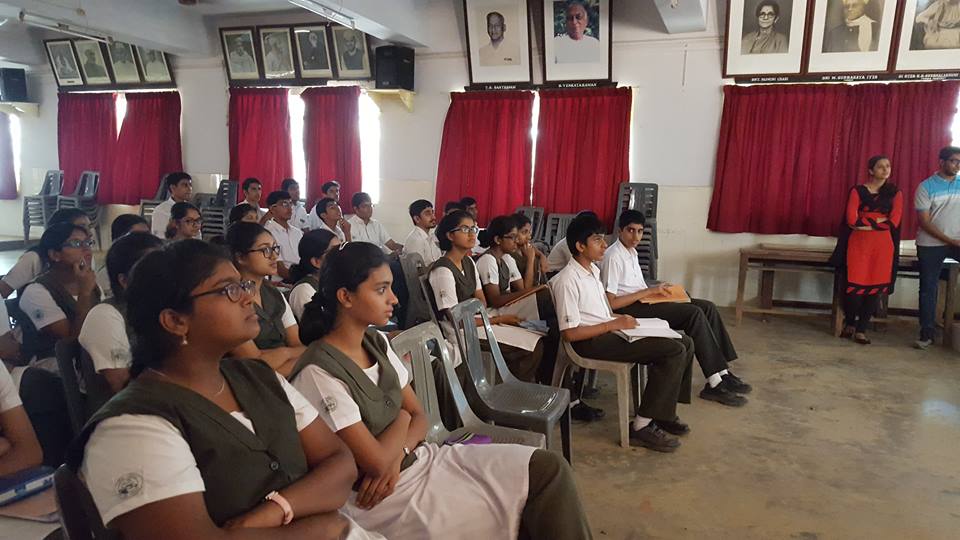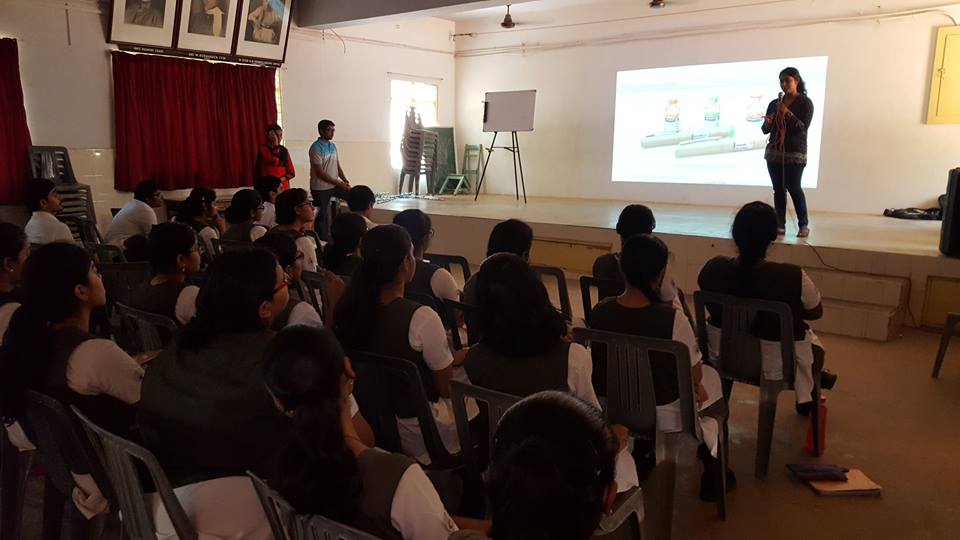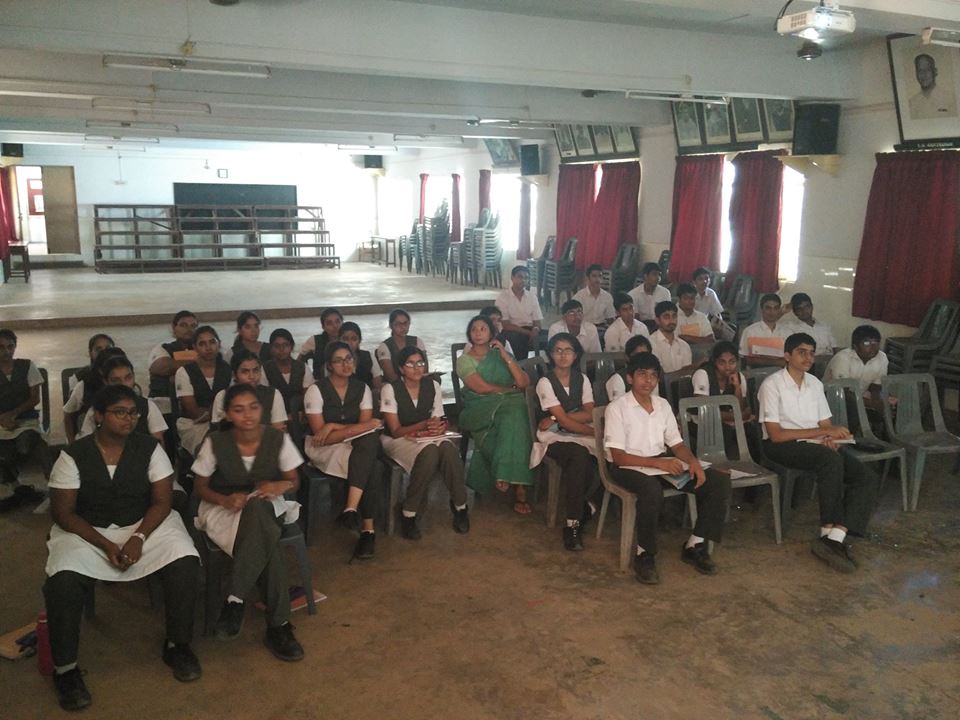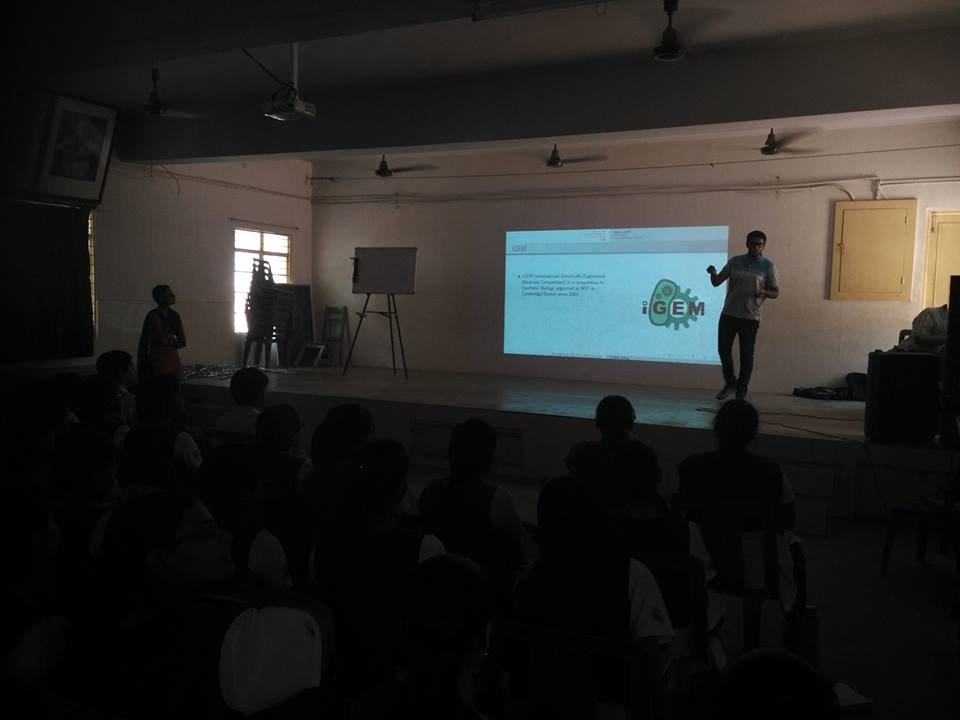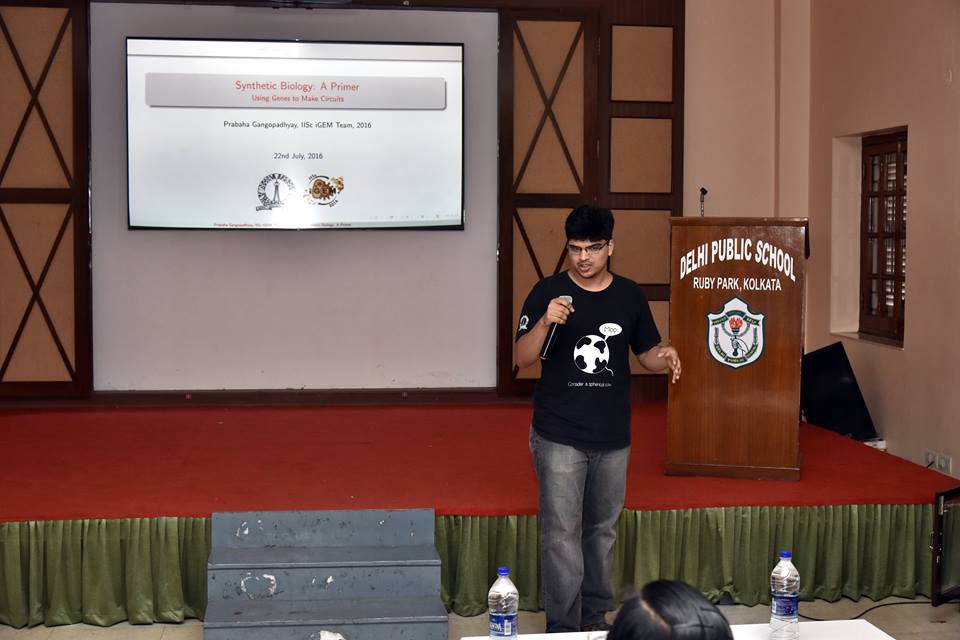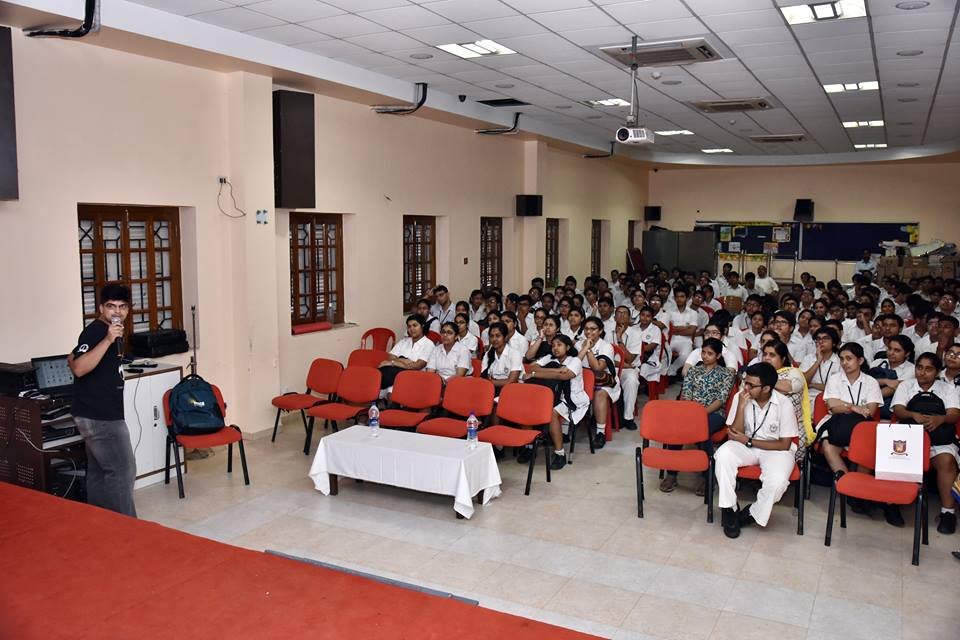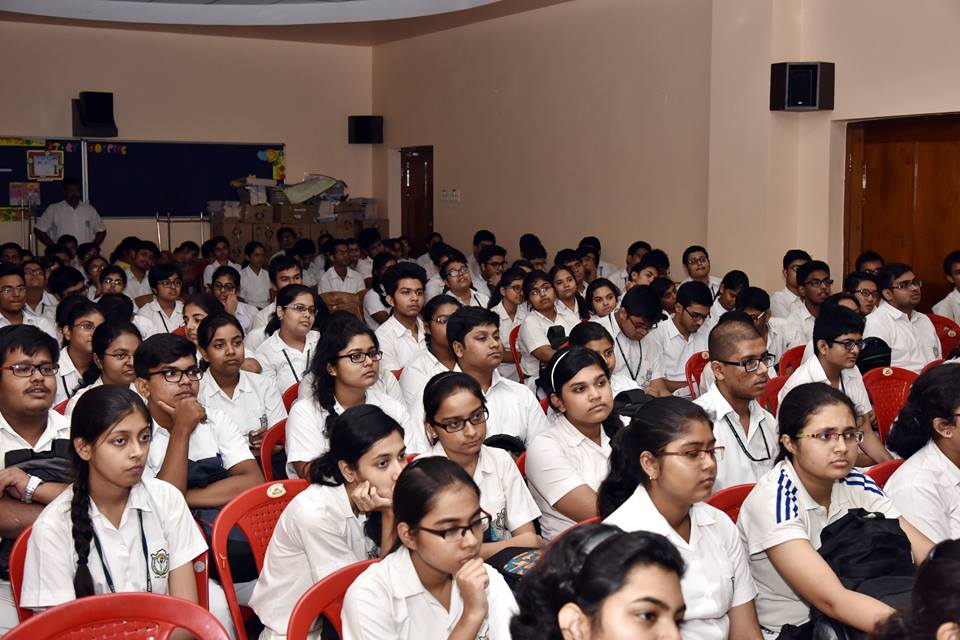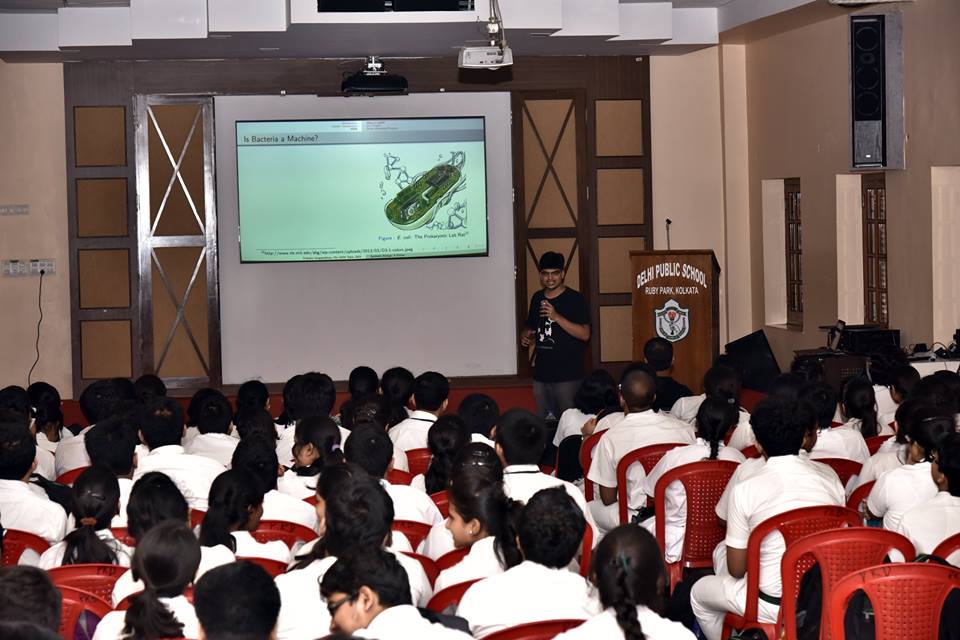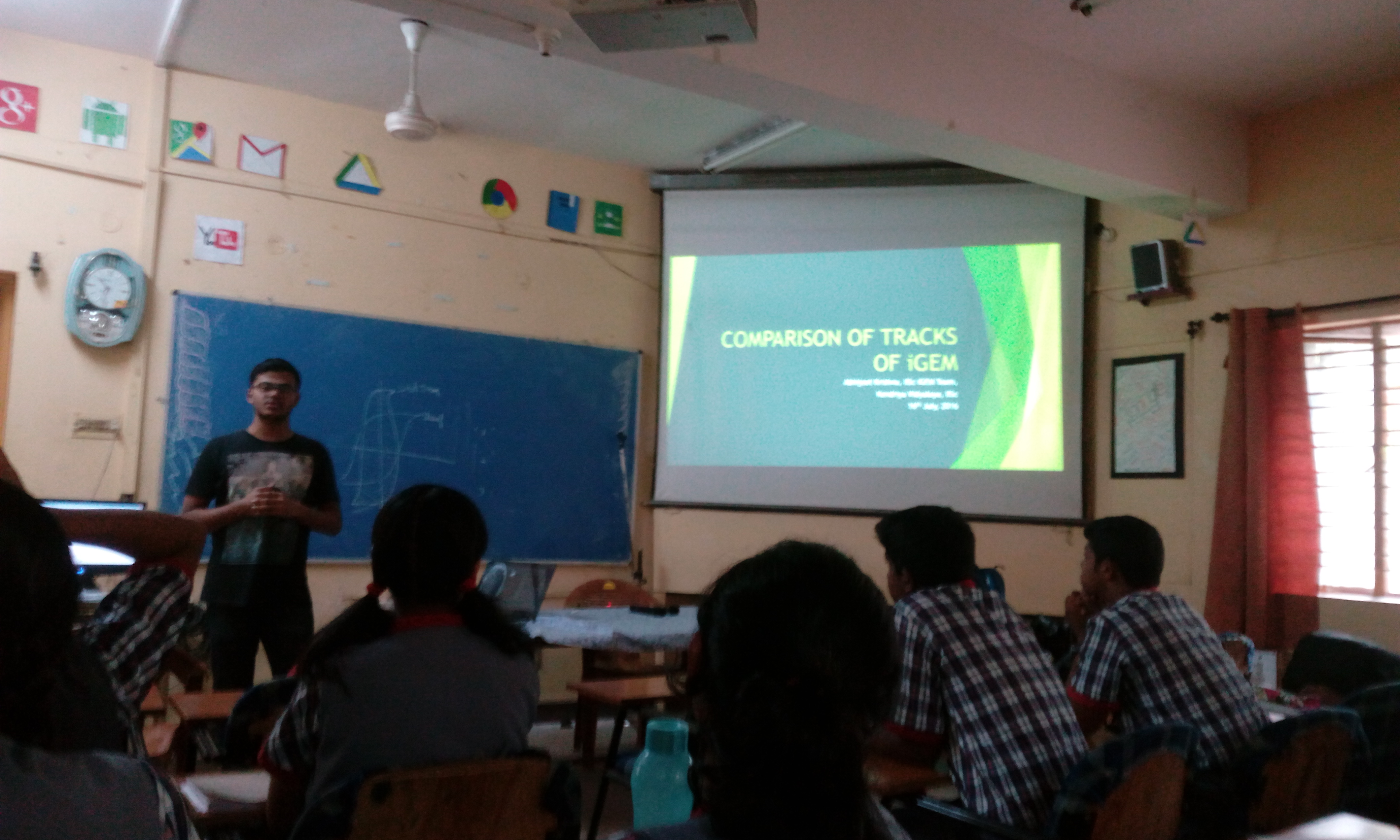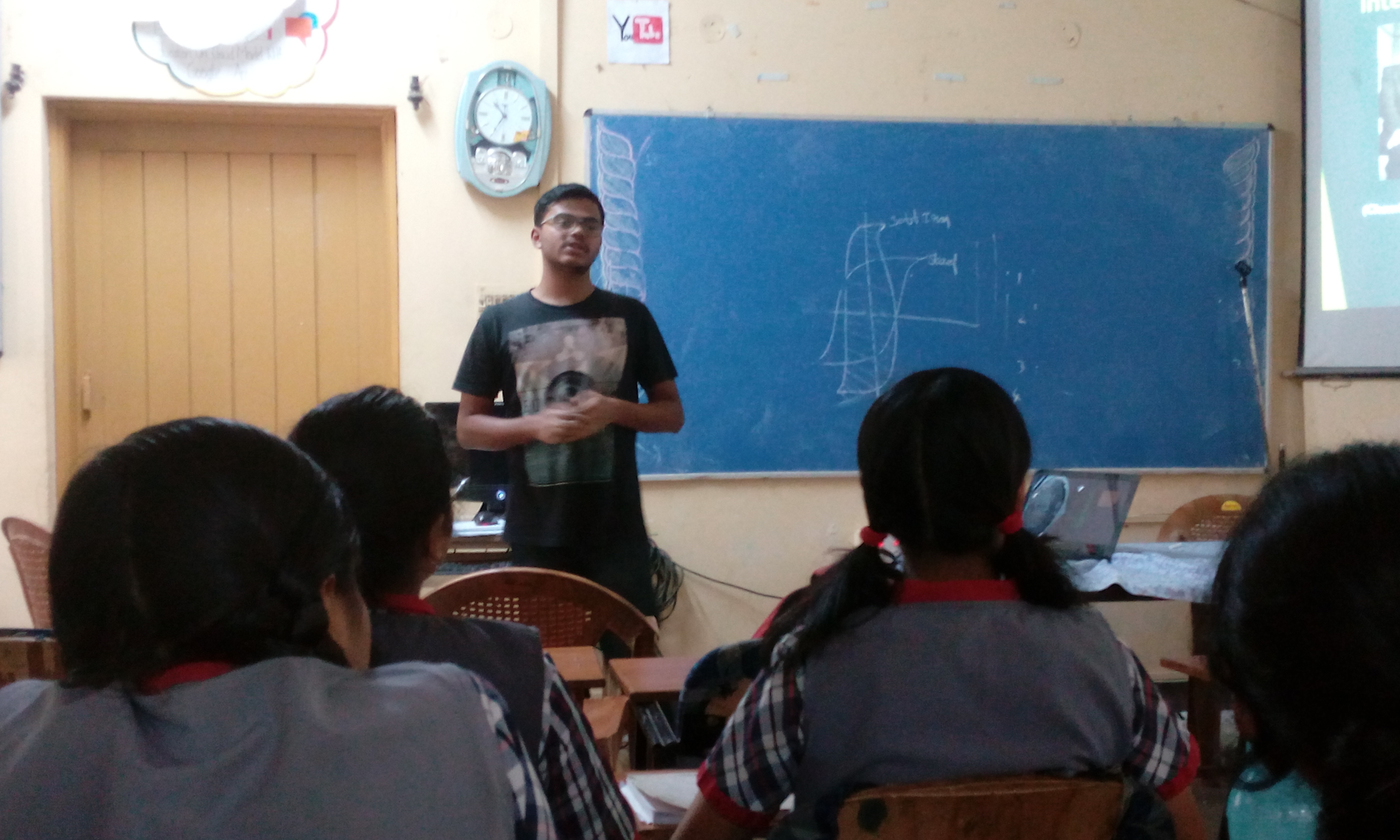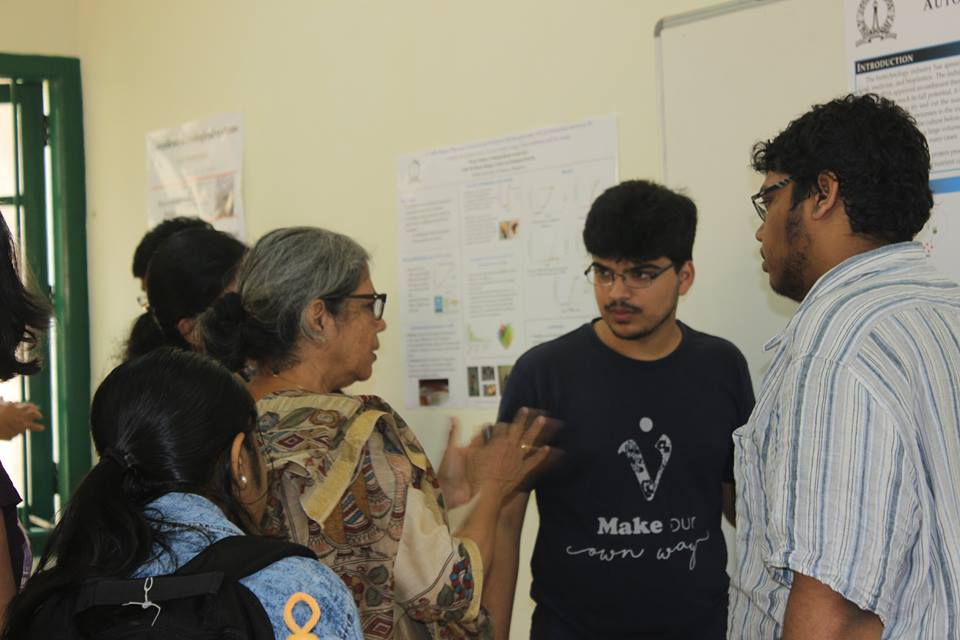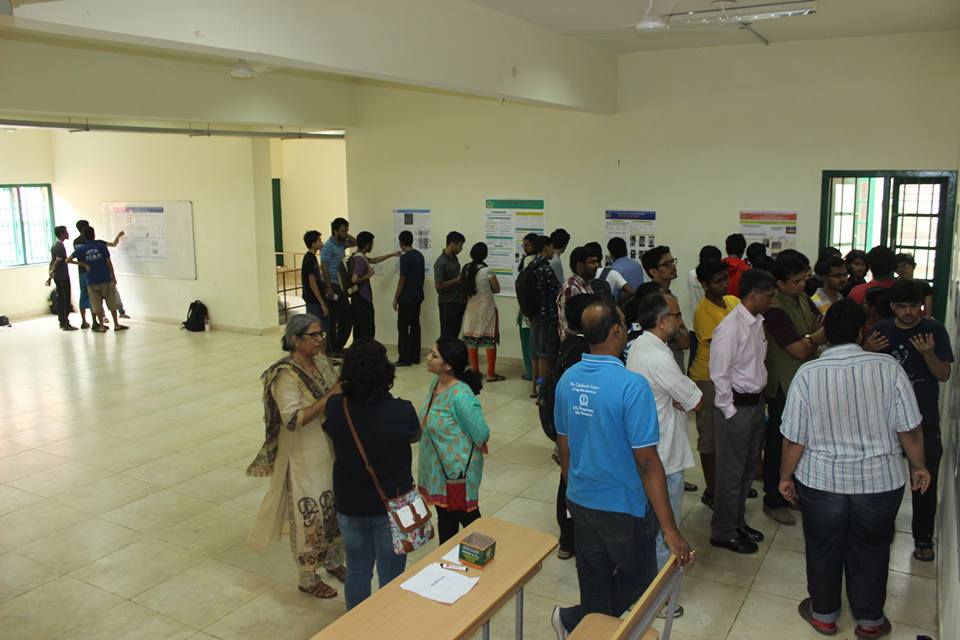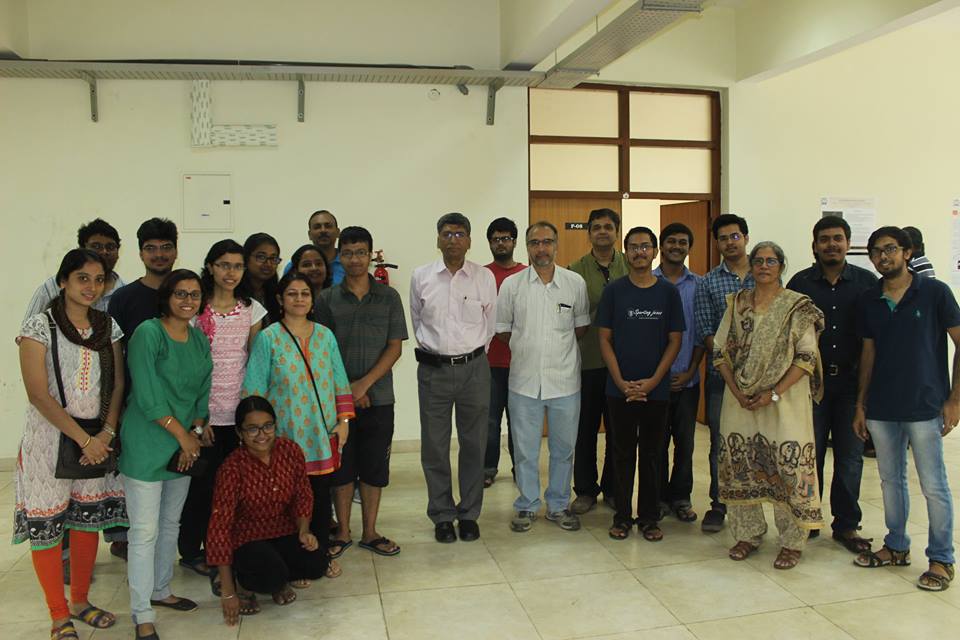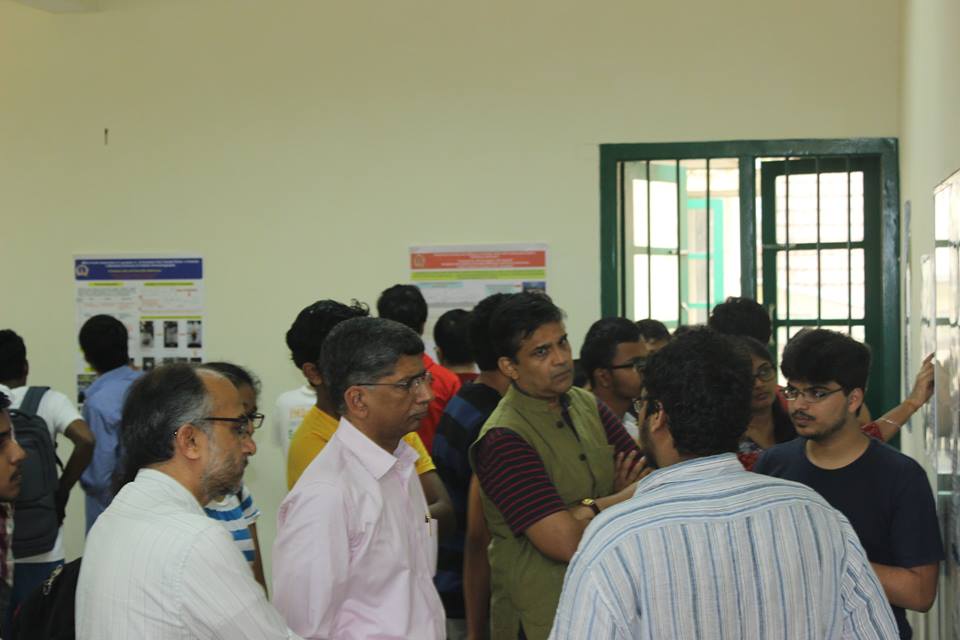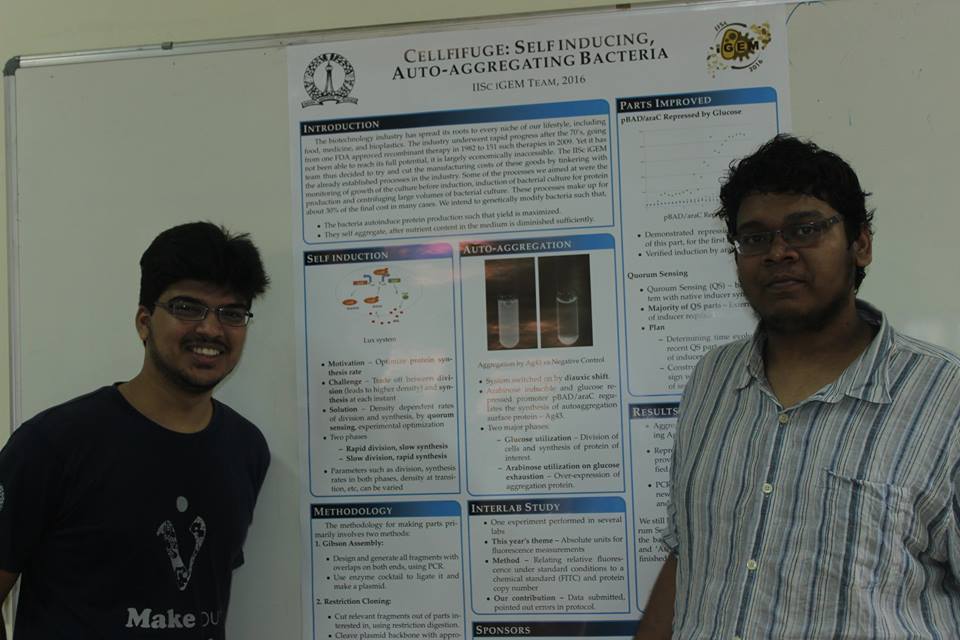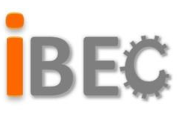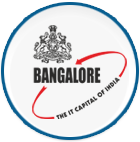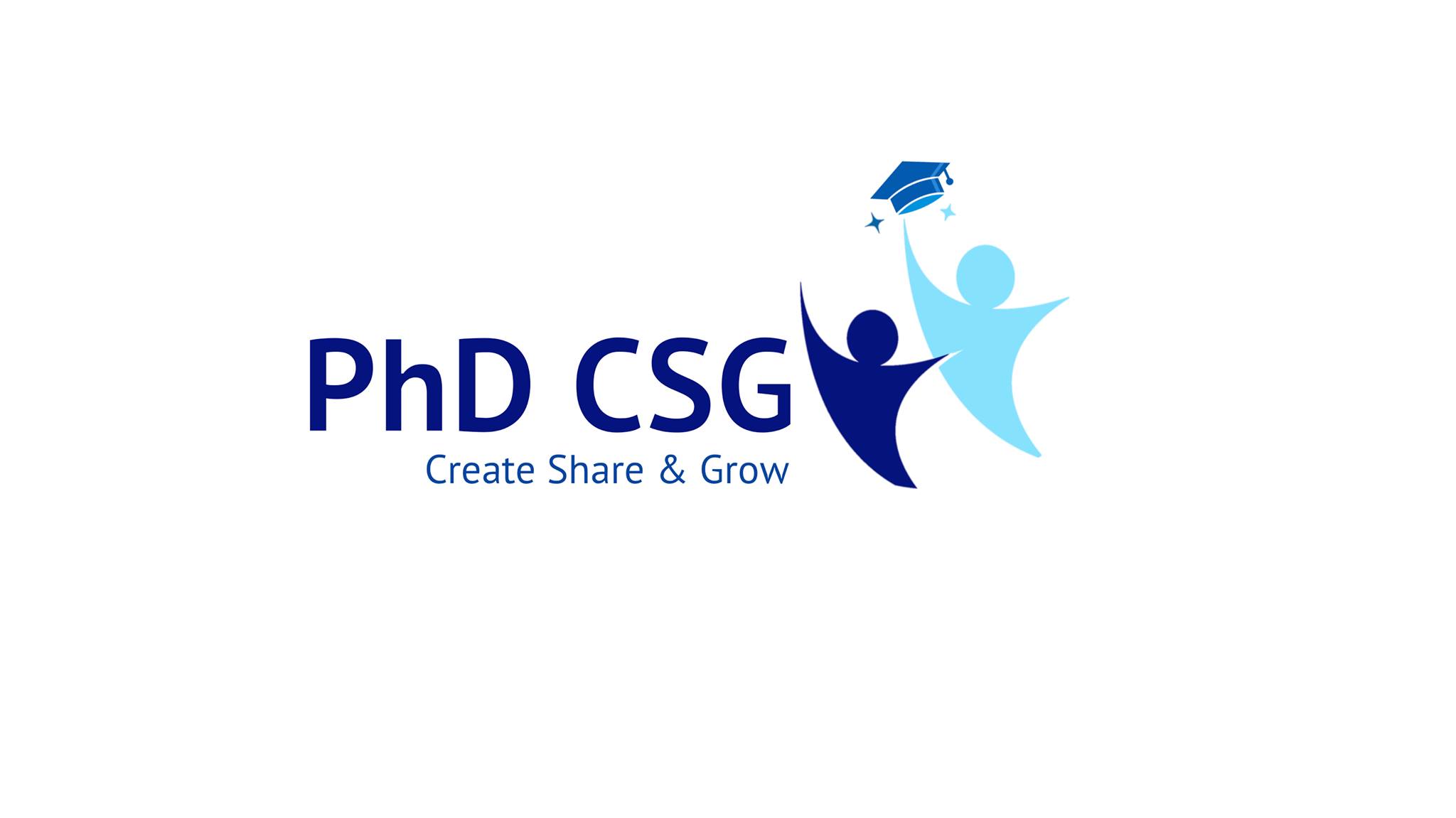SVCE Indian iGEM meet
The question session highlighted some problems in our idea, helped explore possible offshoots of our idea and also told us about how our idea was perceived by a heterogeneous group of individuals who are biotechnology literate.
Some of the issues raised during the meet about our idea are summarized below:
a. (Problem) Is the diauxic media composition required for cellfifuge compatible with the complex media used in industrial scale applications? How will modifying the existing media so as to make cellfifuge applicable affect cost of manufacturing?
b. (Problem) What level of contamination by Ag43 is expected after downstream processing?
c. (Problem) How does the addition of an extra step in downstream processing, i.e., removing Ag43 by using metal affinity chromatography affect the net cost of protein production using the cellfifuge sysem?
d. (Problem) Are any proteins known to associate (chemically) strongly with Ag43? This question has significant impact on the diversity of proteins to which cellfifuge can be applied, if certain proteins of interest associate rather strongly with Ag43, some fraction of it will be removed with the Ag43, reducing yield.
e. (Problem, Offshoot) Is it possible and if so, how can this system be implemented in gram positive bacteria and eukaryotes? This is of special importance if cellfifuge is to be applied to produce proteins with post-translational modifications.
f. (Suggestion) The arrangement of the cells in a cluster (aggregated because of Ag43 expression) is a factor that needs to be taken into consideration while calculating the drag force on the cluster and as a result, will affect the sedimentation coefficient of the cluster (the ”rate” at which the cluster settles down). This parameter was included as a part of our model of Ag43 sedimentation because of an SVCE faculty’s opinion.
Some of the issues we raised during the meet about the other team’s ideas:
The afternoon session consisted primarily of a discussion on troubleshooting protocols such as 3A assembly, more specifically, verifying restriction digestion, eliminating self-ligated products etc. Troubleshooting protocols – inputs from our iGEM team towards the SVCE team:
a. Ampicillin plates should be incubated only for ~16 hours (degradation of Amp, appearance of satellite colonies after that point). Working on a plasmid with a Chloramphenicol resistance in the backbone is preferable to Ampicillin.
b. Verifying Restriction Digestions before 3A assembly: Gel electrophoresis results were inconclusive - one of the digested fragments was only 100bp smaller than the undigested fragment and the resolution using normal sized gels and ladders was not sufficient to see this difference clearly; also, the 100bp fragment expected was not seen.
We suggested running the gel for a very short period of time (~15 minutes) as the 100bp fragment may have been run out of the gel due to the passage of current for a long time. A PCR with appropriate primers (anneals to regions on both sides of the restriction site, cannot anneal at the annealing temperature after digestion due to a shorter region of annealing with each digested fragment compared to the undigested fragment) was also suggested to check if the restriction digestion was successful .Possible experimental collaborations were also discussed.
Presentations at schools
Broadly, the presentations had 3 parts:
a. Definitions of some basic terms used in genetic engineering such as gene, promoter, operator, inducer, reporter etc and how to put together these modular components in constructing genetic circuits.
b. A simple, binary framework for quantitatively analyzing the outputs of simple genetic circuits.
c. Introduction to iGEM, our project and some previous years’ projects.
In enhancing the awareness of high school students about genetic engineering and iGEM, most teams undertake some form of a. and c.; however, we think we stand out by including b., a technique by which students would be able to quantitatively predict the output of the circuits they construct. The objective was to convey that genetic engineering is a diverse area with inputs from biological and more abstract areas of science and engineering.
The presentation was followed by a questionnaire presented to the audience to see how the presentation changed the audience’s knowledge of the topics (related to our iGEM project) and their views about the importance of the question addressed by our iGEM project.
The collaboration was during the presentations in Chennai, the city in which our collaborating college, SVCE is located. The point of the collaboration was that the iGEM projects of both the teams could be presented to the students and since our projects were quite different (ours was basic while theirs was applied research) and we could give the students exposure about the challenges in both these types of projects.
In the Schools
Photo gallery
Prabaha Gangopadhyay, from the IISc Bangalore iGEM Team delivering a talk titled "Synthetic Biology: Using Genes to Make Circuits" to high school students of Ramakrishna Vivekananda Mission Vidyabhavan, Barrackpore, West Bengal, India.
2. Vidyamandir
Aiswarya Prasad and Shreyas Gopalakrishnan, from the IISc Bangalore iGEM Team and members of the SVCE iGEM Team delivering a talk titled "Synthetic Biology: Using Genes to Make Circuits" to high school students of Vidyamandir, Mylapore, Channai, India.
3. D. P. S.
Prabaha Gangopadhyay, from the IISc Bangalore iGEM Team delivering a talk titled "Synthetic Biology: Using Genes to Make Circuits" to high school students of Delhi Public School, Ruby Park, Kolkata, West Bengal, India.
4. K. V. IISc
Abhijeet Krishna introducing synthetic biology to students of Central Government School K. V. IISc .
SVCE Indian iGEM meet
The SVCE Indian iGEM meet was held on 23rd July, 2016 at SVCE, Chennai, India.The morning session consisted of presentations by the IIT-Madras, IISc Bangalore and SVCE, each followed by a round of questions from an audience that consisted of SVCE faculty, students and, members of the iGEM teams.
The question session highlighted some problems in our idea, helped explore possible offshoots of our idea and also told us about how our idea was perceived by a heterogeneous group of individuals who are biotechnology literate.
Read more
Photo gallery
Presentations at schools
We made presentations introducing genetic engineering to students of class 11 and 12 (equivalent to high school sophomores and seniors respectively) in 5 different schools across 3 different cities.
Broadly, the presentations had 3 parts:
a. Definitions of some basic terms used in genetic engineering such as gene, promoter, operator, inducer, reporter etc and how to put together these modular components in constructing genetic circuits.
Read rest
Photo gallery
Science Club presentation
We prepared and presented a poster at the poster session by the Indian Institute of Science’s undergraduate science club. The audience consisted mainly of freshman year students.
Read more
Photo gallery

